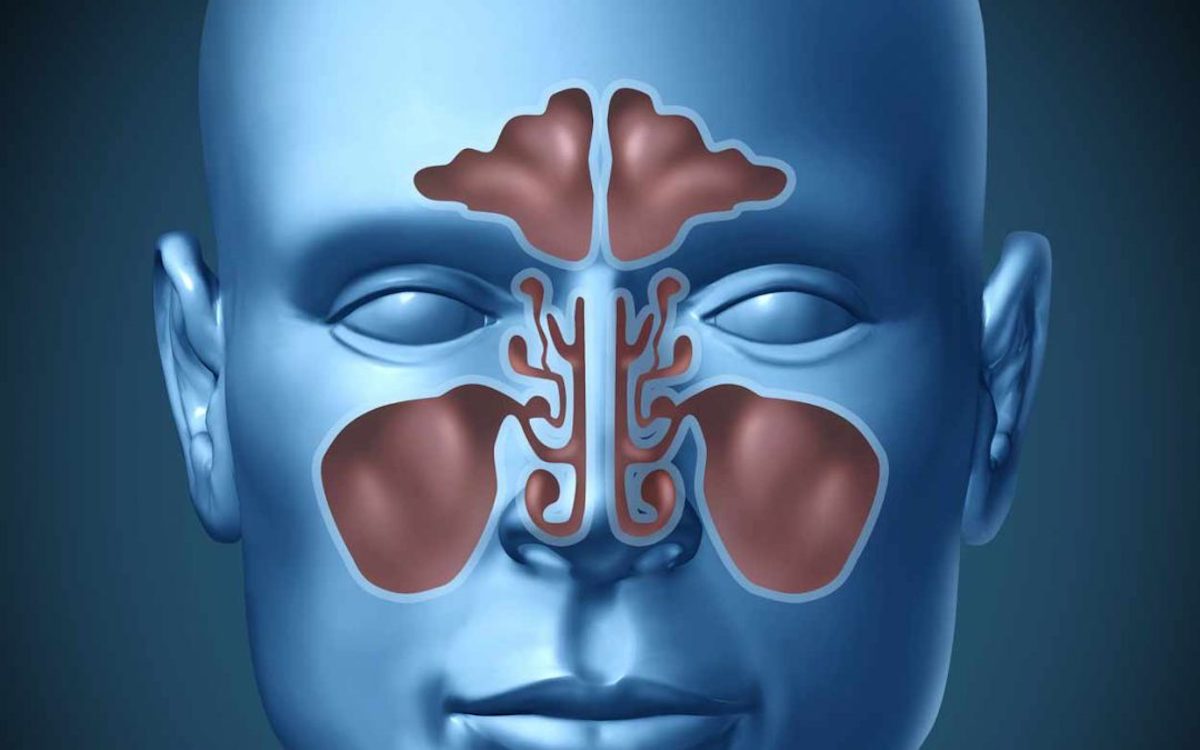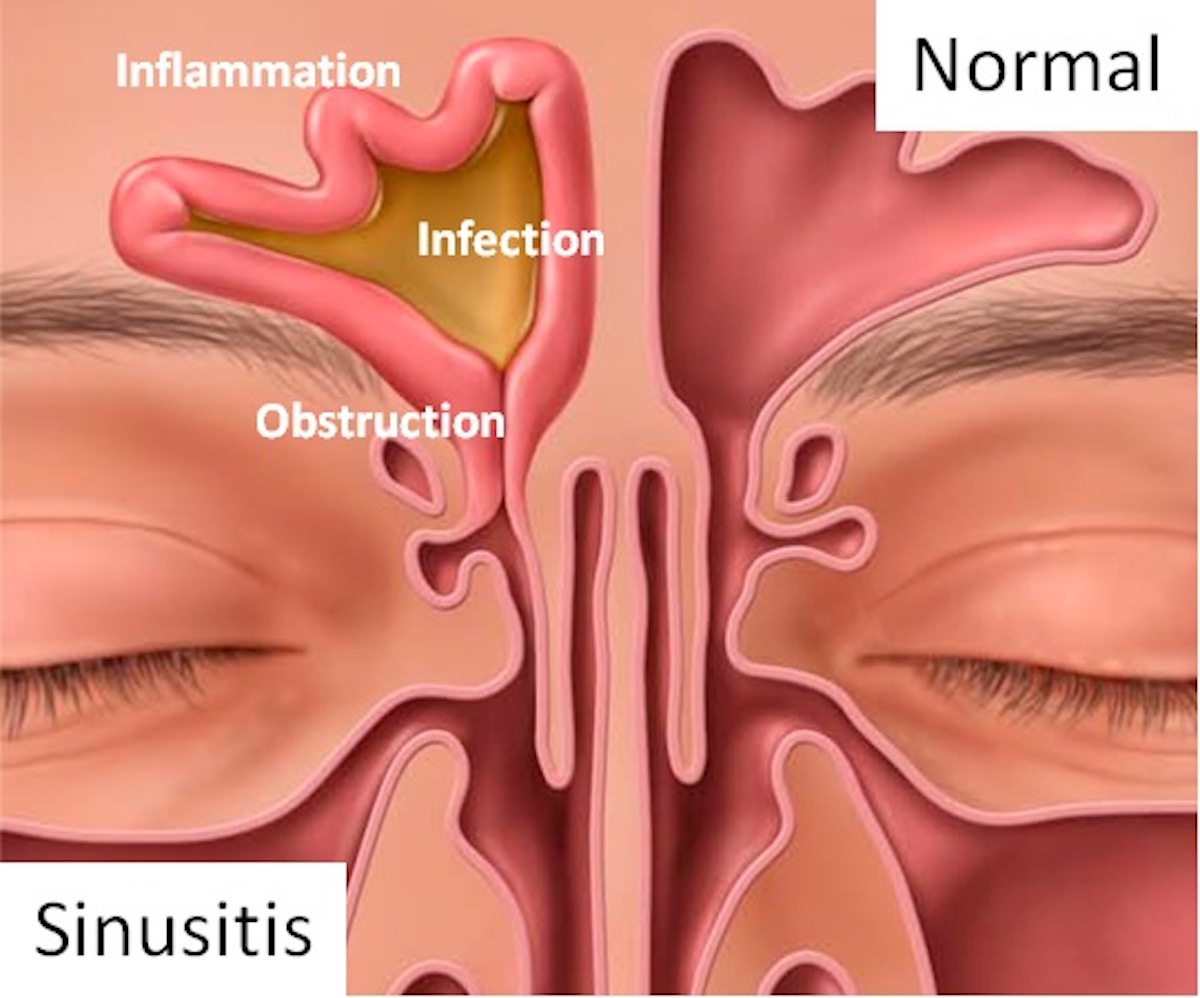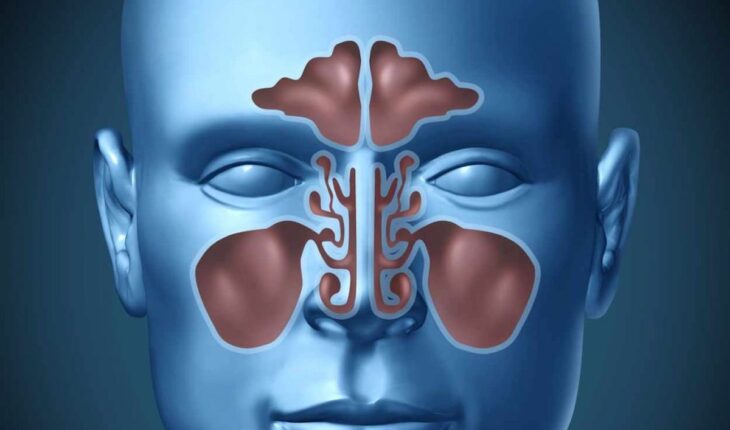We all suffer from the common cold from time to time. Nothing serious, am I right? Just put some extra tissues – and these days a mouth mask – in your bag, and we go about our daily business as usual. The big question is: Are you 100% sure it’s “just” a cold, or is it maybe something more serious? Like a sinus allergy or, worse, a sinus infection, also known as sinusitis?

Approximately 35 million suffer this condition, at least once a year. Severe types of sinus infections, like chronic sinusitis, result in more than 20 million doctor visits yearly. Making sinusitis for everyone important to know how you can recognize this condition and what you should do next.
What Is a Sinus Infection?
Sinuses are 4 paired spaces in the head and when (one of) these sinuses, or the tissue lining them, gets infected, inflamed, or swollen, it’s called sinusitis or sinus infection. In case you wonder what these sinuses are for. Well, they help keep the nose clean and free of bacteria, but if they get blocked by swelling inflammation, the thin mucus the sinuses make, won’t be able to drain through the nose and fill up in these spaces. These 4 different types of sinuses are called:
- Ethomoidal sinuses, located between the eyes
- Maxillary sinuses, located below the eyes
- Sphenoidal sinuses, located behind the eyes
- Frontal sinuses, located above your eyes
What Causes Sinusitis?
The sinuses that get infected the most are the maxillary sinuses because these are the ones with the biggest cavity in the head. There are also 4 different types of sinusitis, this has nothing to do with, which sinus is infected, but how it’s caused, what symptoms it causes, and how long it last. The types are called acute bacterial sinusitis, chronic sinusitis, subacute sinusitis, and recurrent acute sinusitis. Often bacteria, viruses, or fungi cause the sinuses to swell, block and inflame. Examples are:
- Common cold
- Weakened immune system
- Allergies
Other possible causes for sinus infections are smoking, having a deviated septum, and growths (nasal polyps) on the lining of the nose or sinuses. For children spending time at a daycare, pacifiers, and drinking a bottle on its back are well-known causes.
Everybody can get sinusitis. However, smokers or people who inhale a lot of second-hand smoke, or people with seasonal or indoor/outdoor allergies, have increased chances of getting sinusitis. The big question is: how do you know it’s a sinus infection, the common cold, or allergy symptoms? Well, to be honest: this can be difficult, but there is a way.

A cold usually has a pattern; it builds, peaks, and eventually disappears, this can be a few days to a full week. A cold can evolve into a sinus infection, you will experience more (and other) symptoms than with a common cold. The difference between a nasal allergy and sinusitis is almost none, so in this case, it’s wise to contact a professional healthcare provider.
What Are the Symptoms of a Sinus Infection?
We know the difference between a common cold and sinusitis, is its pattern and symptoms, but what are the symptoms? The main symptoms of a sinus infection include:
- Facial pain and/or pressure
- Mucus drips down the throat
- Runny or stuffy nose, with thick yellow or green discharge/mucus
- Loss of smell
- Cough or congestion
- Headaches
Other additional symptoms may include fatigue, sore throat, fever, toothache, and smelly breath. Sometimes nausea and vomiting also occur, but this is only if the mucus ends up in the stomach and the stomach is hypersensitive to it and throws it out by vomiting. If your symptoms continue for more than 12 weeks, it’s called a chronic sinusitis
Are There Any Treatment Options for Sinusitis?
It’s always smart to contact your professional healthcare provider. He or she will examine your symptoms and if necessary prescribe the right treatment. Possible treatment options include:
- Decongestants
- Over-the-counter cold and allergy medications
- Nasal saline irrigation
- Antibiotics
- Prescription intranasal steroid sprays
There are also several home remedies to speed up the process of relieving your symptoms. Possible options are using warm compresses, drinking plenty of water, or steam inhalation. As you can see there are many ways to treat a sinus infection. It’s important to do extensive research before choosing a treatment option that suits you and your symptoms. This research can be done via your professional healthcare provider, but you can also find enough information online. To help you on your way, start your online research here:

